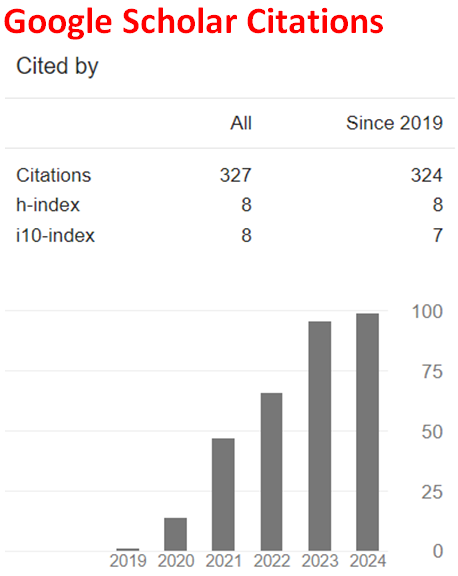Effect of Selenium on TNAZ Molecule - A DFT Treatment
Abstract
The present treatment deals with an unusual composite of TNAZ that is TNAZ+ nSe(n:1,2) within the constraints of density functional theory at the level of UB3LYP/6-31++G(d,p). TNAZ is an insensitive high explosive material. Since, selenium atom in its ground state has two unpaired electrons, the composites are considered in their singlet, triplet and quintet states. Selenium and TNAZ interact at different extents and the systems are electronically stable but TNAZ+2Se (singlet) structurally decomposes by the elongation of one of the geminally substituted nitro groups. Modeling studies indicate that the N-O bond elongation in the composite mentioned occurs only if azetidine ring is present with or without the nitramine bond. For the composites various structural, electronic and quantum chemical data have been harvested and discussed.
Downloads
References
P.F. Pagoria, G.S. Lee, R.A. Mitchell and R.D. Schmidt, A review of energetic materials synthesis, Thermochim. Acta 384 (2002), 187-204. https://doi.org/10.1016/S0040-6031(01)00805-X
H.S. Jadhav, M.B. Talawar, D.D. Dhavale, S.N. Asthana and V.V. Krishnamurthy, Alternate method to synthesis of 1,3,3-trinitroazetedine (TNAZ): Next generation melt castable high energy material, Indian J. Chemical Technology 13 (2006), 41-46.
L. Türker, A composite of NTO and TNAZ - A DFT treatment, Earthline Journal of Chemical Sciences 5(2) (2021) 261-274. https://doi.org/10.34198/ejcs.5221.261274
L. Türker, A DFT treatment of some aluminized 1,3,3-trinitroazetidine (TNAZ) systems - A deeper look, Earthline Journal of Chemical Sciences 3(2) (2020), 121-140. https://doi.org/10.34198/ejcs.3220.121140
T.G. Archibald, R. Gilardi, K. Baum and C.J. George, Synthesis and x-ray crystal structure of 1,3,3-trinitroazetidine, J. Org. Chem. 55 (1990), 2920-2924. https://doi.org/10.1021/jo00296a066
R.L. McKenney, Jr., T.G. Floyd, W.E. Stevens, T.G. Archibald, A.P. Marchand, G.V.M. Sharma and S.G. Bott, Synthesis and thermal properties of 1,3-dinitro-3-(1′,3′-dinitroazetidin-3′-yl) azetidine (TNDAZ) and its admixtures with 1,3,3-trinitroazetidine (TNAZ), J. Energ. Mater. 16 (1998), 199-235. https://doi.org/10.1080/07370659808217513
A.M. Hiskey, M.C. Johnson and E.D. Chavez, Preparation of 1-substituted-3,3- dinitroazetidines, J. Energ. Mater. 17 (1999), 233-252. https://doi.org/10.1080/07370659908216106
J. Zhang, R. Hu, C. Zhu, G. Feng and Q. Long, Thermal behavior of 1,3,3- trinitroazetidine, Thermochim. Acta 298 (1997), 31-35. https://doi.org/10.1016/S0040-6031(97)00056-7
S. Zeman, The thermoanalytical study of some amino derivatives of 1,3,5- trinitrobenzene, Thermochim. Acta 216 (1993), 157-168. https://doi.org/10.1016/0040-6031(93)80389-R
M.H. Keshavarz, Approximate prediction of melting point of nitramines, nitrate esters, nitrate salts and nitroaliphatics energetic compounds, J. Hazard. Mater. 138 (2006), 448-451. https://doi.org/10.1016/j.jhazmat.2006.05.097
Z. Jalovy, S. Zeman, M. Suceska, P. Vavra, K. Dudek and J.M. Rajic, 1,3,3- Trinitroazetidine (TNAZ). Part I. Syntheses and properties, J. Energ. Mater. 19 (2001), 219-239. https://doi.org/10.1080/07370650108216127
D.S. Watt and M.D. Cliff, Evaluation of 1,3,3-trinitroazetidine (TNAZ) – A high performance melt-castable explosive, Technical Report DSTO-TR-1000, Defence Science and Technology Organization (DSTO), Aeronautical and Maritime Research Laboratory, Melbourne, Australia, 2000.
A.K. Sikder and N. Sikder, A review of advanced high performance, insensitive and thermally stable energetic materials emerging for military and space applications, J. Hazard. Mater. 112 (2004), 1-15. https://doi.org/10.1016/j.jhazmat.2004.04.003
S. Iyer, E. Y. Sarah, M. Yoyee, R. Perz, J. Alster and D. Stoc, TNAZ based composition C-4 development, 11th Annual Working Group, Institute on Synthesis of High Density Materials (Proc.), Kiamesha Lakes, 1992.
M. Oftadeh, M. Hamadanian, M. Radhoosh and M.H. Keshavarz, DFT molecular orbital calculations of initial step in decomposition pathways of TNAZ and some of its derivatives with –F, –CN and –OCH3 groups, Computational and Theoretical Chemistry 964 (2011), 262-268. https://doi.org/10.1016/j.comptc.2011.01.007
J.O. Doali, R.A. Fifer, D.I. Kruzezynski and B.J. Nelson, The mobile combustion diagnostic fixture and its application to the study of propellant combustion Part-I. Investigation of the low pressure combustion of LOVA XM-39 Propellant, Technical Report No: BRLMR-3787/5, US Ballistic Research Laboratory, Maryland, 1989.
J.P. Agrawal, Recent trends in high-energy materials, Prog. Energ. Combust. Sci. 24/1 (1998), 1-30. https://doi.org/10.1016/S0360-1285(97)00015-4
M.D. Coburn, M.A. Hiskey and T.G. Archibald, Scale-up and waste minimization of the Los Alamos process for 1,3,3-trinitroazetidine (TNAZ), Waste Management 17 (1997), 143-146. https://doi.org/10.1016/S0956-053X(97)10013-7
L. Jizhen, F. Xuezhong, F. Xiping, Z. Fengqi and H. Rongzu, Compatibility study of 1,3,3-trinitroazetidine with some energetic components and inert materials, Journal of Thermal Analysis and Calorimetry 85(3) (2006), 779-784. https://doi.org/10.1007/s10973-005-7370-8
L. Türker and S. Varis, Desensitization of TNAZ via molecular structure modification and explosive properties – A DFT study, Acta Chim. Slov. 59 (2012), 749-759.
P.J. Durant and B. Durant, Introduction to Advanced Inorganic Chemistry, London: Longman, 1972.
T. Moeller, Inorganic Chemistry, New York: Wiley, 1958.
D.F. Shriver, P.W. Atkins, C.H. Langford, Inorganic Chemistry, Oxford: Oxford, 1990.
J.J.P. Stewart, Optimization of parameters for semiempirical methods I. Method, J. Comput. Chem. 10 (1989), 209-220. https://doi.org/10.1002/jcc.540100208
J.J.P. Stewart, Optimization of parameters for semi empirical methods II. Application, J. Comput. Chem. 10 (1989), 221-264. https://doi.org/10.1002/jcc.540100209
A. R. Leach, Molecular Modeling, Essex: Longman, 1997.
P. Fletcher, Practical Methods of Optimization, New York: Wiley, 1990.
W. Kohn and L. Sham, Self-consistent equations including exchange and correlation effects, J. Phys. Rev. 140 (1965), A1133-A1138. https://doi.org/10.1103/PhysRev.140.A1133
R.G. Parr and W. Yang, Density Functional Theory of Atoms and Molecules, London: Oxford University Press, 1989.
C.J. Cramer, Essentials of Computational Chemistry, Chichester, West Sussex: Wiley, 2004.
A.D. Becke, Density-functional exchange-energy approximation with correct asymptotic behavior, Phys. Rev. A 38 (1988), 3098-3100. https://doi.org/10.1103/PhysRevA.38.3098
S.H. Vosko, L. Wilk and M. Nusair, Accurate spin-dependent electron liquid correlation energies for local spin density calculations: a critical analysis, Can. J. Phys. 58 (1980), 1200-1211. https://doi.org/10.1139/p80-159
C. Lee, W. Yang and R.G. Parr, Development of the Colle-Salvetti correlation energy formula into a functional of the electron density, Phys. Rev. B 37 (1988), 785-789. https://doi.org/10.1103/PhysRevB.37.785
SPARTAN 06, Wavefunction Inc., Irvine CA, USA, 2006.
V.I. Minkin, R.M. Minyaev and Yu.A. Zhdanov, Nonclassical Structurs of Organic Compounds, Moscow: Mir, 1987.

This work is licensed under a Creative Commons Attribution 4.0 International License.


